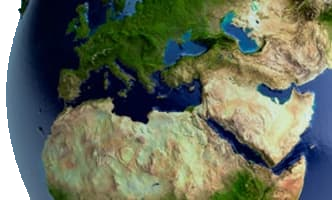Author
Elli Louka
Publication Year
2011
Source
Edward Elgar, Cheltenham, UK – Northampton, MA, USA
viii+440 pages
| TABLE OF CONTENTS |
Listof Abbreviations
Chapter I. State of War
1. Conventional War
2. Unconventional War
3. Mass Destruction War I
4. Mass Destruction War II
5. Use of Space
6. Persistent Conflict
Chapter II. Risk Management in National Security Strategies
1. Strategies for Risk Management
2. Security Strategies of Nuclear Weapon States
3. Security Strategies of Threshold Nuclear Weapon States
4. View from the Outside
5. National Security Strategies and Global Transparency
Chapter III. Nuclear Weapons and Nuclear Energy: The Connection
1. From Chernobyl to Nuclear Renaissance
2. Using the Nuclear Fuel Cycle to Make Nuclear Weapons
Chapter IV. The Architecture of the Non-Proliferation Order
1. The Nuclear Non-Proliferation Treaty
2. The Safeguards System
3. Export Controls
4. Unleashing the Might of the Security Council
5. Making Exceptions: The Case of India
6. Outlawing Nuclear Testing
7. Zones and Areas Free of Nuclear Weapons
Chapter V. The Fairness and Effectiveness of the Non-Proliferation Order
1. Preemption and Precaution in the UN System and State Practice
2. Global Order
3. Global Justice and Nuclear Weapons
4. The Nuclear Non-Proliferation Order
5. Effectiveness of Non-Proliferation
6. Enforcement
7. The Future of Nuclear Weapons
Chapter VI. The Threat of Nuclear Terrorism: How to Make the World Proliferation Resistant
1. Loose Nukes and Illicit Networks
2. International Anti-Terrorism Legislation
3. Anti-Terrorism Initiatives
4. Nuclear Terrorism: The Unmet Challenge
Chapter VII. Just and Effective International Institutions
1. The Role of the International Atomic Energy Agency
2. The Structure of the International Atomic Energy Agency
3. Standards for Safety and Security
4. Who Controls the Fuel Cycle: Fairness of Cartels and Fuel Banks
5. An Effective International Atomic Energy Agency
6. Looking Back and Looking Ahead: The 2010 Review of Non-Proliferation
Chapter VIII. Just and Effective Regional Institutions
1. European Union Case Study: Euratom
2. Brazil-Argentina Case Study
Chapter IX. Can a Nuclear War be a Just War?
1. Nuclear Weapons and the Survival of States: The Opinion of the International Court of Justice
2. The Use of Nuclear Weapons in War: Principles of Humanitarian Law
Chapter X. Controlling Nuclear Weapons
1. The Military-Industrial Complex
2. Arms Control Instruments
3. Strategies for Nuclear Disarmament and Arms Control
4. Instruments of Nuclear Arms Control
5. The Open Skies Treaty
6. Anti-Ballistic Missile Treaty and Missile Defense
7. Verification of Disarmament
8. Prospects of a Fissile Material Cutoff Treaty
Chapter XI. Enforcement, Preemption and Precautionary Self-Defense
1. Attacking Nuclear Reactors
2. Anticipatory Self-Defense and Preemption
3. The Role of Covert Operations
4. Enforcement and the Fairness and Effectiveness of Non-Proliferation
5. Precautionary Self-Defense and the World Order
Index
About the author

Elli Louka
President, Law-in-Action, Princeton, New Jersey, USA



